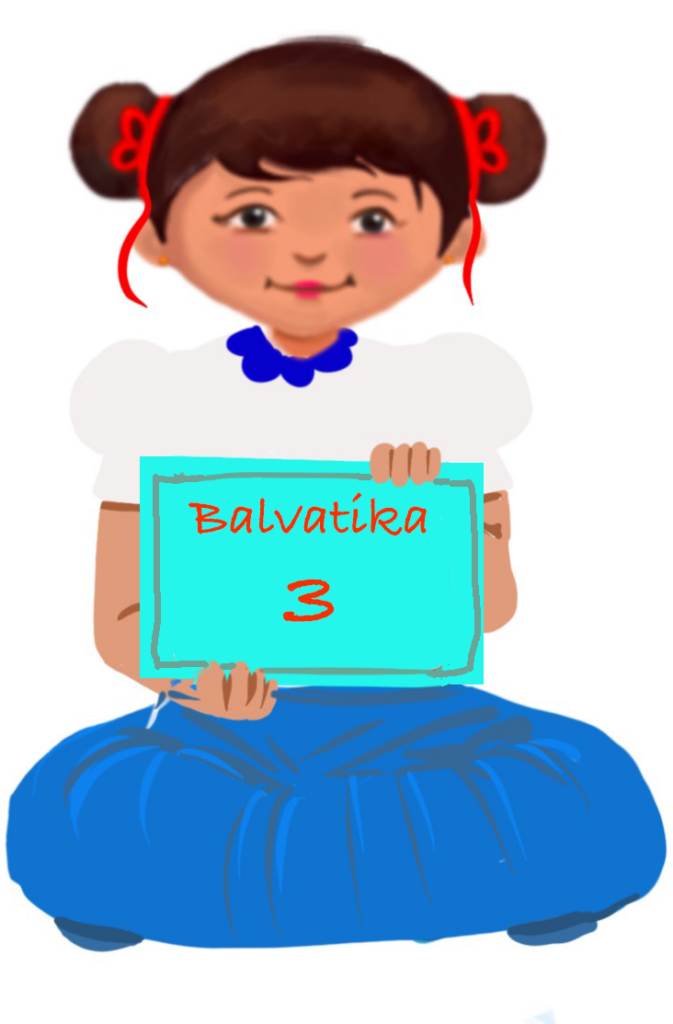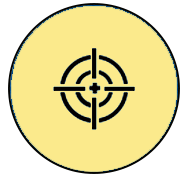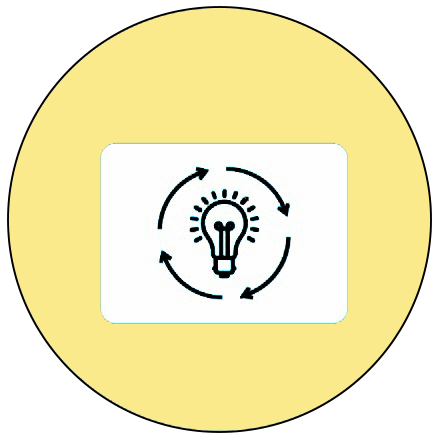
Sorting and Classifying
Week 4 – Sorting by Colour and Size
 Objective
Objective
Children will sort objects and pictures based on colour and size accurately when provided with assorted objects.
 Prerequisites
Prerequisites
1. Children know the concept of size (big, medium and small).
2. Concept of matching.
 Pre-Teach Vocabulary
Pre-Teach Vocabulary
together, big, small, medium
Introduction
- The introduction of the topic can be done through a story. (Video provided)
- The teacher can explain the story orally also to reinforce what children have seen in the video.
- Picture cards of the story can also be given to the child as reinforcement.
- A few questions can be asked related to the story to elicit the topic of sorting by colour and size.
- Who was Moli?
Answer: A monkey - What did Moli want to collect?
Answer: Mangoes - What kind of mangoes did Moli want for making chutney?
Answer: Big red mangoes. - What kind of mangoes did Moli want for making pickles?
Answer: Small green mangoes. - Who helped Moli in collecting the mangoes?
Answer: Rinku helped Moli in collecting the mangoes.
- Who was Moli?
- Later, the teacher shows pictures of different colours and sizes of mangoes and asks the children to identify according to their colour and size and then sort.
For example, a picture of a big red mango, a big green mango, a big yellow mango, a small red mango, a small green mango, and a small yellow mango.
The activity can be made (sorting mangoes) kinaesthetic: –
a) By drawing 2 trees on the chart taped on the wall. Children pick up a mango picture cut out from the basket where assorted mango picture cut outs are kept and stick it on the trees according to the colour and size.
b) The trees can also be drawn on the floor with the help of chalk for conducting the above activity.
LTMs for Story: Moli the monkey
LTMs for Story: Mangoes picture cards
Video: Introduction – Story: Moli the monkey
ISL Video: Introduction – Story: Moli the monkey
Activity 1: My Garden
Objective: To sort the pictures according to their colour and size and complete the picture.
Importance of the activity for children:
Helps in developing:
- Cognitive skills (choosing the right picture according to the instructions provided)
- Social skills (cooperation, waiting for the turn, playing together)
- ADL skills (sorting clothes, etc.).
Resources required: Picture cut-outs
Setting for the activity: The activity can be done indoors.
Type of Activity: Pair or group activity
Preparation of activity:
The teacher provides a worksheet and pictures for sorting and sticking on the worksheet. (Different sizes of flowers, leaves and butterflies)
Role of the teacher: Demonstrator and facilitator.
Procedure:
- The teacher can take a print of the worksheet and picture cut outs of butterflies, flowers, and leaves (provided as LTM) according to the number of children in the class.
- The class can be divided into groups of four.
- Each group will be given picture cards for sorting.
- The teacher can keep three picture cards, each with a particular colour and size, on the table. (For e.g., a small yellow butterfly, a big red flower, and a big yellow leaf on the table, and children will pick those butterflies and flowers that are matching with the ones kept on the table and sort.
Observation:
The children are made to observe the result of the activity as follows:
- Sorting butterflies, flowers, and leaves is done according to their colour and size.
- The teacher can note down her observations and guide the children accordingly.
Conclusion:
Children would learn to sort pictures based on their colour and size.
Video: Activity 1 – My garden
ISL Video: Activity 1 – My garden
LTMs for Activity 1: Sorting by colour and size
Activity 2: Sorting Buttons
Objective: To sort buttons based on colour and size from the sensory bin box.
Importance of the activity for children:
Helps in developing:
- Cognitive skills
- Fine motor skills (picking buttons from the sensory bin)
- Social skills
- Language and communication skills.
Resources required:
- Sensory bin.
- Buttons of different colour, shape and size.
Setting for the activity:
The activity can be done indoors or outdoors, depending on the space availability.
Type of activity:
Individual or pair activity.
Preparation of activity:
The teacher keeps the materials ready for the activity.
Role of the teacher:
Demonstrator and facilitator.
Procedure:
- The teacher demonstrates the activity by sorting small red, small yellow, and big red and big yellow buttons in different bowls that are labelled accordingly.
- The teacher then divides the children into groups and asks the children to sort the buttons based on their colour and size.
Observation:
The children are made to observe the result of the activity as follows:
- Once all the buttons are sorted, the teacher shows and verbally summarises the work done by the children.
- The teacher can note down her observations and guide the children accordingly.
Conclusion:
Children would learn to sort buttons based on their colour and size.
Video: Activity 2 – Sorting buttons based on colour and size
ISL Video: Activity 2 – Sorting buttons based on colour and size
Check list for teacher:
| Activity | Yes | No | Sometimes |
| Can identify different sizes (big, medium, and small) | |||
| Can sort pictures or objects when only two different types of colours and sizes are given. | |||
| Can sort more than two different types of colour and sizes. | |||
| Can complete the activity in the given time | |||
| Can do the activity independently | |||
| Able to express verbally and through actions, expressions, or gestures. |
Fun Activity: Choose the Right Mango

Teacher Resource Document
| Source and Attribution of images: All images used in the above Assets and Aids are originally created. |
| This digital material has been developed by the Sri Sathya Sai Vidya Vahini Inclusive Education Project, a unit of Sri Sathya Sai Central Trust, Prasanthi Nilayam, as a collaborative offering in the service of our nation. |